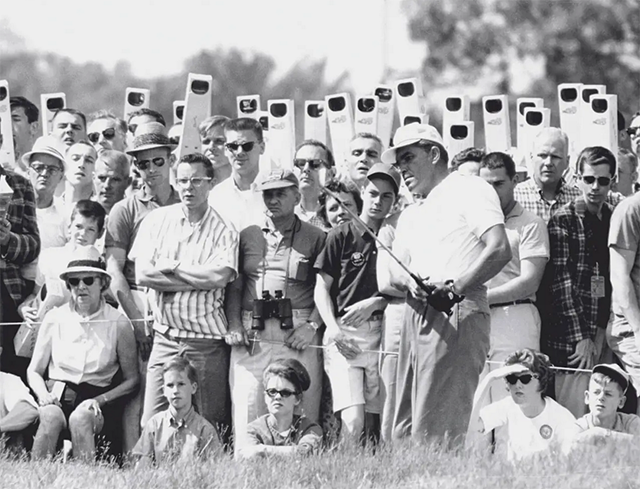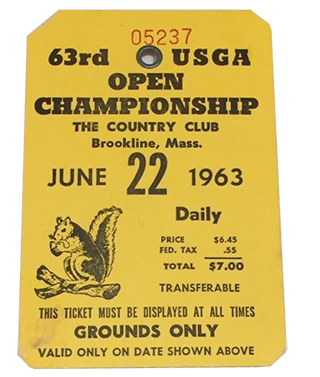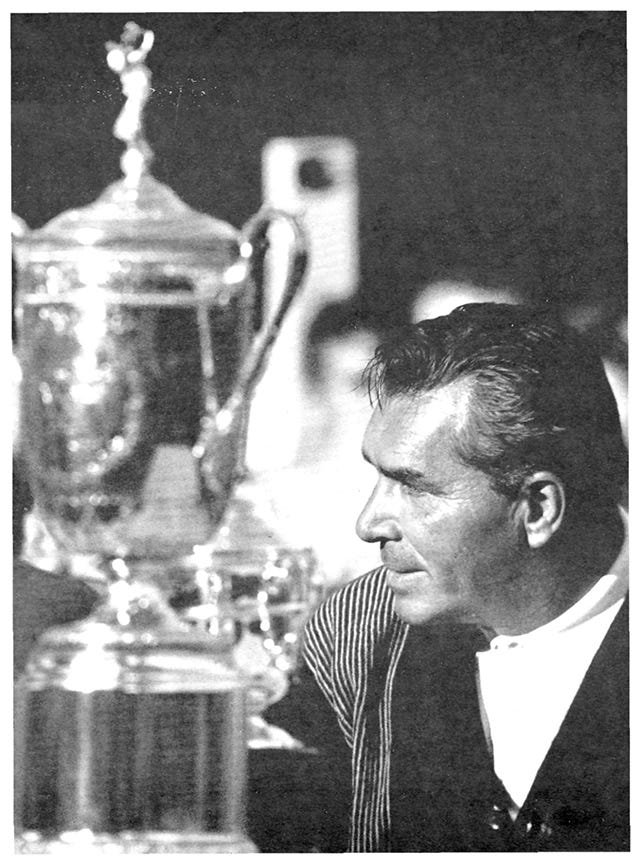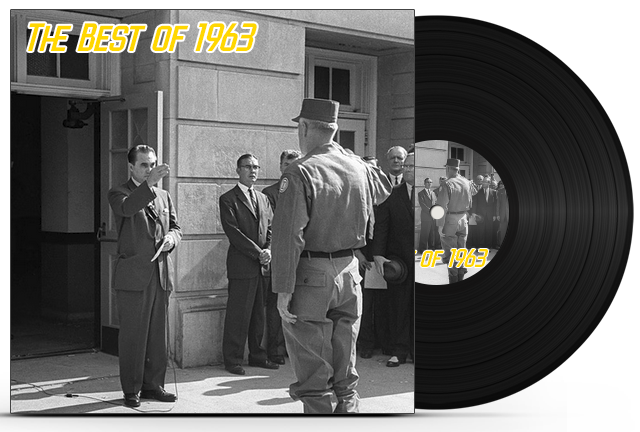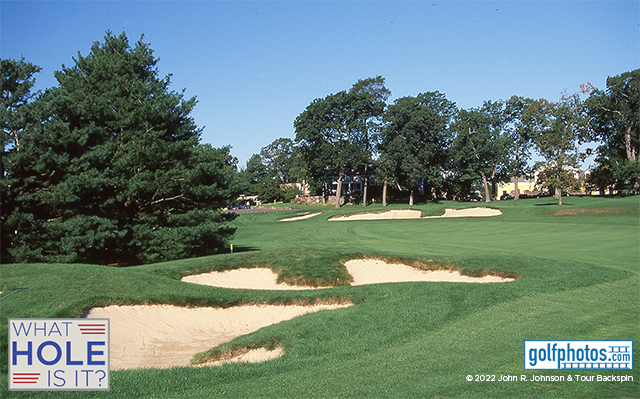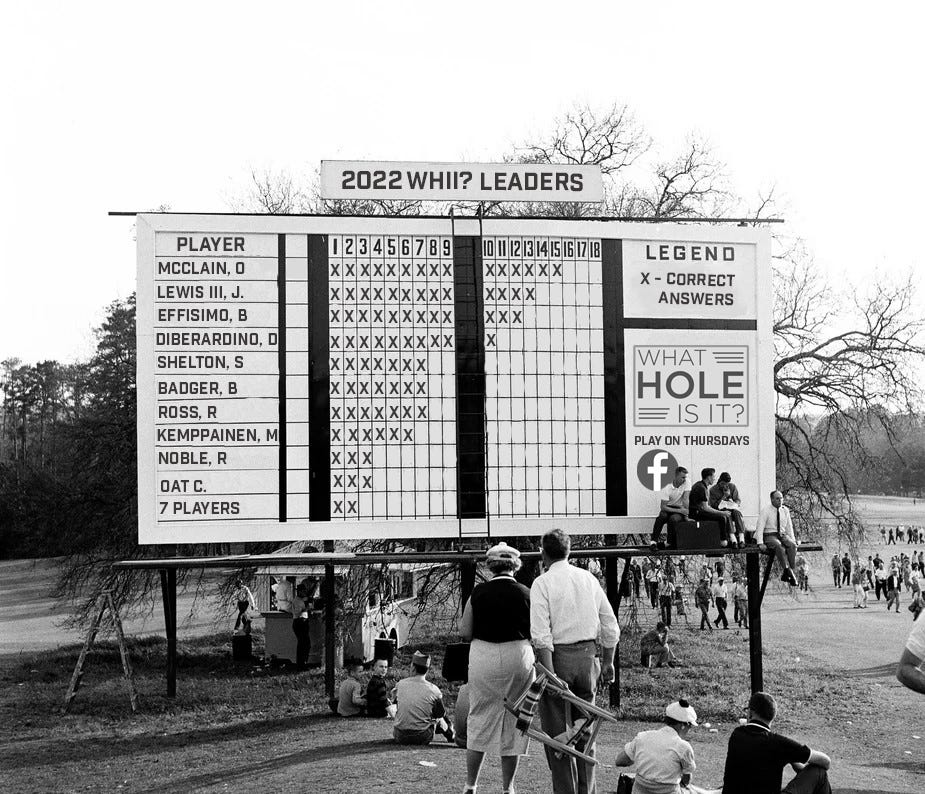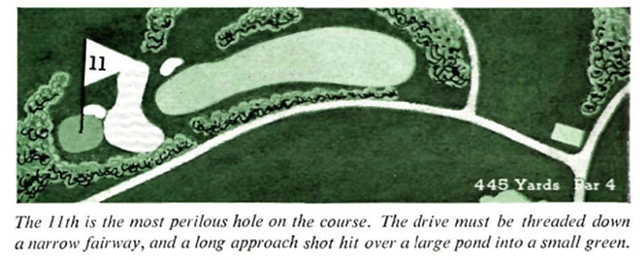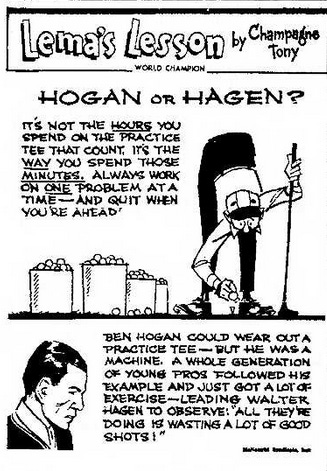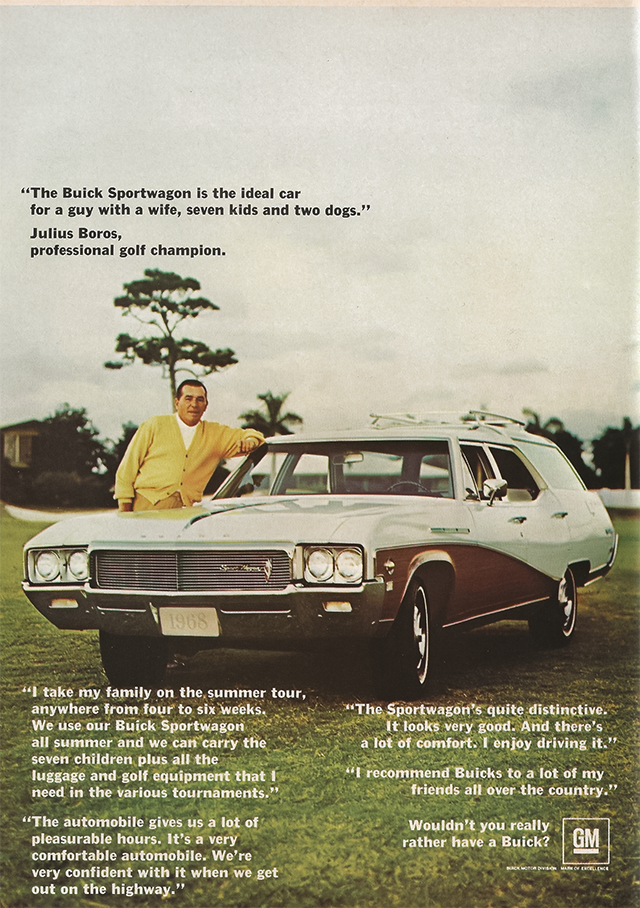Battle at Brookline
Exciting final 36 holes at The Country Club produces a fantastic finish and three-way tie.
It’s a major week on the PGA TOUR this week, and it should be an interesting week after the tumultuous events in the professional golf world from last week. Defectors from the PGA TOUR now aligned with the Saudi backed LIV Golf will play alongside players who have remained loyal to the PGA TOUR. There will be plenty of talk about the current events before history is made, once again, at The Country Club in Brookline, MA. We have a jammed packed newsletter to get you pumped up for what should be a great week. Be sure to check out the U.S. Open links below.
Don’t miss our interview with Al Geiberger and Dave Stockton on The Tour Backspin Show podcast. The two talk major championships, the CBS Golf Classic, Spaulding golf equipment and the par 3 tournament at the Masters. Find out why they may have been the reason that the USGA instituted the one ball rule. Listen HERE or on Spotify or Apple Podcast.
We love to get feedback! Let us know what you think about Tour Backspin and the stories we tell.
Listen to The Tour Backspin Show podcast HERE or on Spotify and Apple Podcast.
Congratulations to Bruce Effisomo, the winner in this week’s WHAT HOLE IS IT? The featured hole was #2 at The Highland Course at Primrose in Meadows of Dan, VA. Bruce is fighting it out with Owen McClain for the top of the leader board. Submit a “Guest Post” picture for WHAT HOLE IS IT? and if we use it, you’ll win a prize and also be credited with a correct score on the leader board. Send your pic to larry@tourbackspin.com. Scroll down for your chance to win this week’s WHAT HOLE IS IT?
We’re playing 1963 U.S. Open Trivia this week on the Tour Backspin Quiz. It’s WHAT HOLE IS IT? on steroids. Scroll down to play.
This week’s vintage ad features two-time U.S. Open champion Julius Boros. You had to know he was a station wagon kind of guy. Scroll down to see.
Did you miss a previous newsletter? You can view it HERE. Forward this email to a friend. Was this newsletter forwarded to you? You can sign up HERE.
Okay, we're on the tee, let's get going.
“It Was The Most Difficult Wind I Have Ever Played In”
Julius Boros in the 1963 U.S. Open at The Country Club in Brookline, MA
It’s late in the day on Monday, June 17th, 1963, and it’s U.S. Open Week. Tony Lema and his new bride, Betty arrive in the Boston area too late for a practice round at The Country Club in Brookline, MA. They had traveled there by car from the Thunderbird Classic that was held at Westchester Country Club in Rye, NY, and heavy traffic delayed their arrival.
How did Lema perform at the U.S. Open and how did that U.S. Open play out? Let’s backspin to find out.
The U.S.G.A. was conducting the 1963 U.S. Open at The Country Club in Brookline, MA, to celebrate the 50th anniversary of Francis Ouimet shocking victory over Ted Ray and Harry Vardon, the two big men of English golfing. The victory put America on the golf map and led to widespread growth of the game on these shores.
Sports Illustrated put Jack Nicklaus on assignment to play the course and write a preview that appeared in the June 17th, 1963, issue. Nicklaus identified three main areas that the 6,870-yard, par 71 course would challenge the touring pros. Those three things were deep rough, tiny greens, and a stretch of six long, tough holes that could exhaust a golfer’s focus to win. This last challenge was exacerbated by the 36-hole final round on Saturday.
The challenging stretch started with the 9th hole, a 505-yard par-5 and ended with the 14th hole, a 530-yard par-5. Nicklaus explains that the 10th hole features a green so small “you could mow it with scissors”, while he identified the 11th hole as the most dangerous hole on the course. As small as the 10th hole green was, the 11th was even smaller, and it was protected by water at the front.
He went on to call the 12th hole a par 4½ due to its length and the 13th one of the toughest driving holes on the course. The par-5 14th hole is identified by Nicklaus as “the climax of the six critical holes, as well as the last chance for the long hitter to wrest some advantage from his length” as long hitters will carry a large mound offering a chance to go for the green in two, while short hitters will land into the hill and not get any run.
Nicklaus also identified the final four holes as deviating from prior Open setups in that they are more apt to produce birdies, and therefore an exciting finish, as opposed to setups where a leader is happy to make pars. He predicted that a player who came into the 15th hole and trailed by a stroke or two, could produce a rush of birdies and win the championship.
Nicklaus finishes his Open preview by stating that The Country Club is not your typical course and that it has “a personality and distinction of its own” and predicted the winning score to be 280.
After being delayed by heavy traffic upon his arrival into Boston on Monday, Lema finally made it out to The Country Club on Tuesday for a practice round and learned what many of his fellow pros already knew; the course would be difficult due to the high rough, blind shots and uneven lies. A rough winter had not been kind to the turf at the course with a disease known as winterkill leaving the grass in the fairways ragged. As a result, the U.S.G.A. mowed what grass there was to a higher length than usual which produced the occasional “flyer” lie with the ball flying farther than players expected. The high rough pinched in the landing areas for drives requiring a great deal of accuracy off the tee.
The U.S.G.A. attempted to make the putting surfaces as fast and as firm as possible. They cut the grass as short as possible and then rolled the greens to achieve a diabolical speed and firmness.
“Trying to hold the ball on these greens,” Julius Boros said, “is like putting on a flight of marble stairs and trying to stop it on the next-to-last stair.”
A 30-knot wind greeted players and fans as Thursday’s opening round commenced. The U.S. Open has a knack for producing an early round leader from the ranks of the unknown players and this year was no exception as Bob Gajda, playing early in the day, shot a two-under 69 to grab the lead. Gajda birdied three of the last five holes and finished his round before the defending champ, Nicklaus, had teed off. In fact, about half the field was waiting to tee off as Gajda finished. There was only one other player on the course who was as much as two-under-par at that point.
At the end of the day, Jacky Cupit stood one stroke behind Gajda and Julius Boros, Tony Lema, and Davis Love, Jr. were another stroke back at 71. Arnold Palmer shot a 73, as did his good friend Dow Finsterwald. Nicklaus shot a disappointing 76 and stood well off the pace.
Arnold Palmer came out in Friday’s second round blazing and fashioned a two-under 69 that catapulted him into a three-way tie for the lead. Dow Finsterwald matched his friend’s 69 and Jacky Cupit shot a 72 to tie Palmer for the halfway lead at 142. Walter Burkemo and Dean Refram both shot even par 71 to sit one-stroke off the lead while Julius Boros, Davis Love, Jr., and Tony Lema all shot 74 and sat at 145, three-strokes off the lead.
It was setting up for an exciting final 36 holes for Saturday. One player who wouldn’t be there was the defending champ Jack Nicklaus who added a 77 to his first-round 76 and missed the cut.
Alfred Wright, writing in the July 1st, 1963, issue of Sports Illustrated set the stage for Saturday’s final 36 holes:
The day belonged more to March than June, with a cloudless blue sky and a wind that made the one the previous day seem like a gentle sea breeze. Some gusts neared 45 knots, and these were swirling blasts that varied across one whole quadrant of the compass, making the planning of a shot more an occult art than a science. At certain holes the wind was actually sucking the sand out of traps and blowing it like a miniature Sahara storm across fairways.
“It was the most difficult wind I have ever played in,” declared Arnold Palmer at the end of his round.
Palmer, wearing a red sweater and light gray slacks, came out like he was prepared to grab this Open by the throat. His putter turned hot, and he sank par-saving putts at the first, second (a 30-footer), and third holes. He secured pars on holes four through six and, for a moment, he held the lead.
He ran into trouble at the par-3, 7th hole, which played straight into the howling wind. His tee shot was short with his ball coming to rest in the deep rough. After pitching to eight-feet, above the hole, Palmer three-putted for a costly double bogey.
“That’s when I found out how fast the greens were,” he said later. “Up until then I hadn’t noticed, because all my putts had been going in. Suddenly, I realized the wind had dried out the greens, and they were about as slick as any I had ever seen.”
Nicklaus’ preview of the 11th hole as the most dangerous hole proved prescient as Palmer ran into more difficulty there. He drove it into the rough and his 2-iron escape was gobbled up by the wind and the ball plopped into the pond protecting the green. Palmer took his penalty and dropped, wedged to the green, and then three-putted for a triple bogey. He lost another stroke on the 14th hole and finished his morning round with a 77.
Even so, he was not out of the tournament, in fact, he was tied for second place. Jacky Cupit shot a 76 and held a one-stroke lead over Palmer, Lema (74), and Burkemo (76). Julius Boros shot a 76 and remained three-strokes off the lead.
The mood in the clubhouse during the lunch break was dark and even The Country Club’s beef hash did not raise the spirits of the players. The conditions were beating them down and they did not look forward to an afternoon of more of the same.
“I don’t care. I just want to get out of here alive,” George Bayer said. His morning round scorecard included an eight and a nine.
“It’s not too bad out there,” Lema told reporters at lunch, “I only got blown down twice.”
The leaders teed off in the afternoon, and after shooting high scores in the morning, they looked to make up ground with some birdies in the afternoon. Pars would have gotten the job done.
Cupit bogeyed the first hole, but he was able to calm himself down and parred the rest of the front nine to make the turn in 36. Lema was tied with Cupit before he bogeyed the 8th and 10th holes to fall two-strokes behind. Palmer seemed to fall out of contention with three bogeys on the front nine.
A 30-foot birdie at the 10th hole by Palmer elicited a huge roar from the crowd and the anticipation of a famous Palmer charge had people rushing from all over the course to join “Arnie’s Army” for the exciting finale to the round.
Boros lost three strokes to par early in his back nine, but he recovered with birdies on the 70th and 71st holes and a par at the final hole to record a 72 for a 293 total. He retired to the locker room where he drank a couple of beers and half-heartedly watched the finish unfold while reading his mail.
Cupit recorded a couple of bogeys early in his back nine on the 11th and 12th holes. By the time that Palmer reached the 16th hole he was just one stroke out of the lead. Palmer’s tee shot at the par-3 wound up 20-feet from the hole and he then stroked in the curling putt and his “army” erupted into loudest cheer of the tournament. Palmer was now tied with Cupit for the lead at eight-over.
That loud roar from the crowd following Palmer forced Cupit to back off a 25-foot chip from the long rough at the 15th hole. He regrouped, and then struck his chip with his sand wedge right into the hole for a birdie, re-taking the lead at seven-over.
Earlier, Lema missed a short tap-in putt on the 13th hole and the shock of missing the putt changed his outlook on what he needed to do. He figured he had to make a birdie, or two, to make up for the lost stroke. His inexperience in major tournaments was exposed by this thinking and would cost him coming down the stretch.
Still, he had a chance for birdie on the par-5 14th hole when he was just shy of the green in two shots. He missed his eight-foot birdie putt. The atmosphere and excitement of the tournament was growing. Lema wrote in Golfer’s Gold, a book co-authored with Alfred Wright, that “We were the Roman legions marching through the crowded boulevards and the crowds were cheering themselves hoarse.”
At the par-3 16th hole, Lema plucked a few blades of grass and, to gauge the wind, threw the grass into the air. The wind grabbed those blades of grass and lifted them straight up. The tension was temporarily lifted as Lema, and the spectators surrounding the tee, all laughed.
Again, Jack Nicklaus’ preview of the course, and this Open, proved correct. He’d written about how the final four holes would provide a great deal of excitement, and boy, did they ever. It was the 17th hole that proved to be the most pivotable.
Lema, playing the 17th hole heard the two roars go up for the birdies of Palmer (on the 16th) and Cupit (on the 15th) and knew he needed to get a birdie. He looked over his approach shot and instead of playing a safe shot with a 7-iron, he elected to try to cut a 6-iron around a tree to get closer to a tucked pin. He hit the ball straight, it flew over the green and into a bunker and a very difficult lie. He could do no better than make bogey and he fell out of contention.
A few moments later, Palmer, playing the 17th missed a short 18-inch putt and made a bogey of his own. Cupit then played the 17th and made a mess of it.
“I was playing strategy, trying to keep the ball on the fairway and went through a bunker,” Cupit explained to reporters after his round. “Left myself 40-yards short of the green coming out, rolled the ball all the way to the back fringe and three putted from there.”
Playing the 18th hole, Palmer put his approach shot to 35-feet from the hole. His first putt came up well short.
“I thought I had a good one on that first putt,” Palmer later said.
Palmer thought he had blown it and quickly and unethusiastically lined up his second putt. His army of fans around the green implored him to take his time as they shouted out for him to look at the leader board. There, the double bogey by Cupit had just been posted and if Palmer could make his six-footer for par, he would force Cupit to birdie the hole to win.
“It looked like a tough putt as it was,” Palmer admitted. “But after Jack put up that six, it became a helluva difficult putt.”
Palmer made the putt, retrieved the ball, and made a gesture of throwing it into the crowd.
“It was one of the biggest putts I ever made,” he said.
Cupit now played the 18th hole and exhibited a great deal of heart as he put his approach shot to 15-feet giving himself a chance to win the Open. His putt went up to the hole, caught an edge and spun out.
Cupit’s birdie putt at the final green to win the 1963 U.S. Open refuses to drop (photo: Sports Illustrated)
The stage was now set for a three-man, 18-hole playoff the next day. The 293 final score was a full 13 strokes higher than what Jack Nicklaus had predicted in his Sports Illustrated preview of the tournament.
Palmer woke up with severe stomach cramps on Monday and tried to play through the pain during the playoff without much success. After a shaky start, Cupit played well, but his score of 73 never seriously challenged Boros who shot a 70 to capture the title and become the oldest player to ever win the national championship.
The anticlimactic playoff probably never had a chance to stand up to the excitement of the final round. But the high winds, difficult conditions, the jammed packed action and the exciting final round finish, it was certain that the 1963 U.S. Open at The Country Club in Brookline, MA would go down in history.
The major tournament experience that Tony Lema gained helped him the next year at St. Andrews when he was able to capture the Claret Jug.
Julius Boros and the U.S. Open trophy at the 1963 U.S. Open (photo: Sports Illustrated)
The 1963 U.S. Open was held at The Country Club at Brookline, MA, to commemorate the 50th anniversary of Francis Ouimet’s victory in the 1913 U.S. Open, also held at The Country Club. Read our Bonus Story for more.
This week’s playlist will take you right back to 1963. Listen HERE.
Please help us grow by forwarding this email to a friend who would enjoy it. Thanks.
Enjoy!
Larry Baush
Follow us on Facebook, Instagram, Twitter and YouTube
Thanks for reading! Please let your family, friends and colleagues know they
can sign up for email delivery of this free newsletter through this link.
U.S. Open Links
See all 18 holes at The Country Club at Brookline HERE.
Watch televised coverage of the final round and playoff of the 1963 U.S. Open HERE.
Watch the 1963 U.S. Open U.S.G.A. official film. It not only features action from the tournament, but also a conversation between Francis Ouimet and Eddie Lowery as they discuss the 1913 U.S. Open. Watch HERE.
WHAT HOLE IS IT?
Are you on the leader board?
Tour Backspin Quiz | 1963 U.S. Open Trivia
The Country Club at Brookline features 27 holes giving it many options for a U.S. Open routing. Which of these holes from 1963 are being played this year? Extra credit for identifying what hole number it is this year.
a.)
b.)
c.)
d.)
Answers below
Bonus Story
Francis Ouimet shot a 304 in the U.S. Open at The Country Club in Brookline, MA in 1913. The score was good enough to get him into a three-man playoff with Ted Ray and Harry Varden, two golfing titans of the day. The 1963 U.S. Open was played at The Country Club in honor of Ouimet’s historic victory and it also was concluded by a three-man 18-hole playoff.
Of course, it is well known how the youngster Ouimet slewed the two titans of British golf in the 18-hole playoff and kicked off a wave of golf fever across the nation.
Ouimet, an amateur, played with wooden-shafted clubs and a ball that was far from the quality of balls played in the early 1960s. This makes it remarkable that Ouimet’s 304 would have been good enough to get into the money at the 1963 Open. The 1963 affair featured high winds, high rough and fast greens to produce the highest winning score of 293 since Sam Parks won at Oakmont with a score of 299 in 1935.
The U.S.G.A. reunited Ouimet with Ed Lowery, his caddy for the 1913 Open and the two reminisced on camera. You can watch the video HERE.
Ouimet was also involved in the trophy ceremony following the playoff in the 1963 U.S. Open.
Blind Shot
Click for something fun. 👀
Tour Backspin Quiz Answer:
a.) The 13th hole in 1963 will be played as the 9th hole in 2022.
b.) The 2nd hole in 1963 will be played as the 2nd hole in 2022.
c.) The 11th hole in 1963 is not being used in 2022. It has been replaced by the short par 3 12th hole from the main course, which is being used for the first time in a U.S. Open since 1913. The 11th hole was idendified by Jack Nicklaus as the most dangerous hole in his 1963 Sports Illustrated preview of the U.S. Open.
d.) The 18th hole in 1963 will be played as the 18th hole is 2022 (minus the racetrack that was removed in the 1960s).
Fun Fact!: The 15th through 18th holes, which played such a large part of our main story this week, will play the same as they did in 1963, and 1913 and 1988. All three of those tournaments ended up in 18-hole playoffs. A two-hole playoff will be employed if this year’s event ends in a tie.
I'd love to hear your feedback! Email me at larry@tourbackspin.com.





